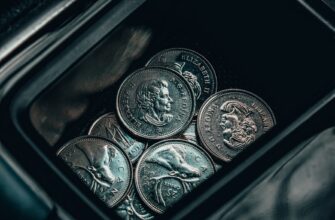- USDC vs USDT vs DAI: Understanding the Top Stablecoins
- What Is USDC (USD Coin)?
- What Is USDT (Tether)?
- What Is DAI?
- USDC vs USDT vs DAI: Key Differences
- FAQ: USDC, USDT, and DAI
- Which stablecoin is the safest?
- Which is best for DeFi?
- Can I convert USDC to USDT or DAI?
- Are these stablecoins truly stable?
- Is DAI better than USDC/USDT?
USDC vs USDT vs DAI: Understanding the Top Stablecoins
Stablecoins like USDC, USDT, and DAI have become essential tools in the cryptocurrency ecosystem, offering price stability in a volatile market. But how do these three major stablecoins differ, and which one should you use? This guide breaks down their features, benefits, and risks to help you decide.
What Is USDC (USD Coin)?
USDC is a regulated stablecoin launched in 2018 by Circle and Coinbase. It’s pegged 1:1 to the U.S. dollar and backed by cash and short-term U.S. Treasuries held in audited bank accounts. Pros include:
- High transparency with monthly reserve audits.
- Widely accepted on exchanges and DeFi platforms.
- Regulatory compliance in the U.S.
Cons include centralization risks and reliance on traditional banking systems.
What Is USDT (Tether)?
Tether (USDT), launched in 2014, is the oldest and most liquid stablecoin. While also pegged 1:1 to the USD, its reserves have faced scrutiny. Pros include:
- Largest market cap ($110B+) and liquidity.
- Supported by nearly all crypto exchanges.
- Low transaction fees.
Cons include historical controversies about reserve backing and limited transparency compared to USDC.
What Is DAI?
DAI is a decentralized stablecoin managed by MakerDAO. Unlike USDC and USDT, DAI is crypto-collateralized (e.g., ETH) and maintains its peg via smart contracts. Pros include:
- Decentralized governance and censorship-resistant design.
- Overcollateralized reserves (100%+).
- Integrates seamlessly with DeFi protocols.
Cons include exposure to crypto market volatility and complexity for beginners.
USDC vs USDT vs DAI: Key Differences
- Issuer: USDC (Circle/Coinbase), USDT (Tether), DAI (MakerDAO).
- Collateral: USDC/USDT use fiat reserves; DAI uses crypto assets.
- Transparency: USDC publishes audits; USDT’s reserves are less detailed; DAI’s collateral is blockchain-verifiable.
- Use Cases: USDT for trading, USDC for DeFi, DAI for decentralized apps.
- Risks: USDC/USDT face regulatory risks; DAI risks smart contract bugs.
FAQ: USDC, USDT, and DAI
Which stablecoin is the safest?
USDC is often considered safer due to its regulated status and transparent audits. DAI offers decentralization but carries crypto volatility risks.
Which is best for DeFi?
USDC and DAI are popular in DeFi. DAI’s decentralized nature aligns with DeFi principles, while USDC offers deeper liquidity.
Can I convert USDC to USDT or DAI?
Yes! Most exchanges and DeFi platforms (e.g., Uniswap) support instant swaps between these stablecoins.
Are these stablecoins truly stable?
All three aim for a 1:1 USD peg, but temporary deviations can occur during market stress (e.g., USDC’s $0.87 dip during March 2023 banking crisis).
Is DAI better than USDC/USDT?
It depends on your needs: DAI for decentralization, USDC for transparency, USDT for liquidity. Diversifying across multiple stablecoins reduces risk.
In conclusion, USDC, USDT, and DAI each cater to different priorities. Evaluate your goals for security, decentralization, and usability to pick the right fit.








